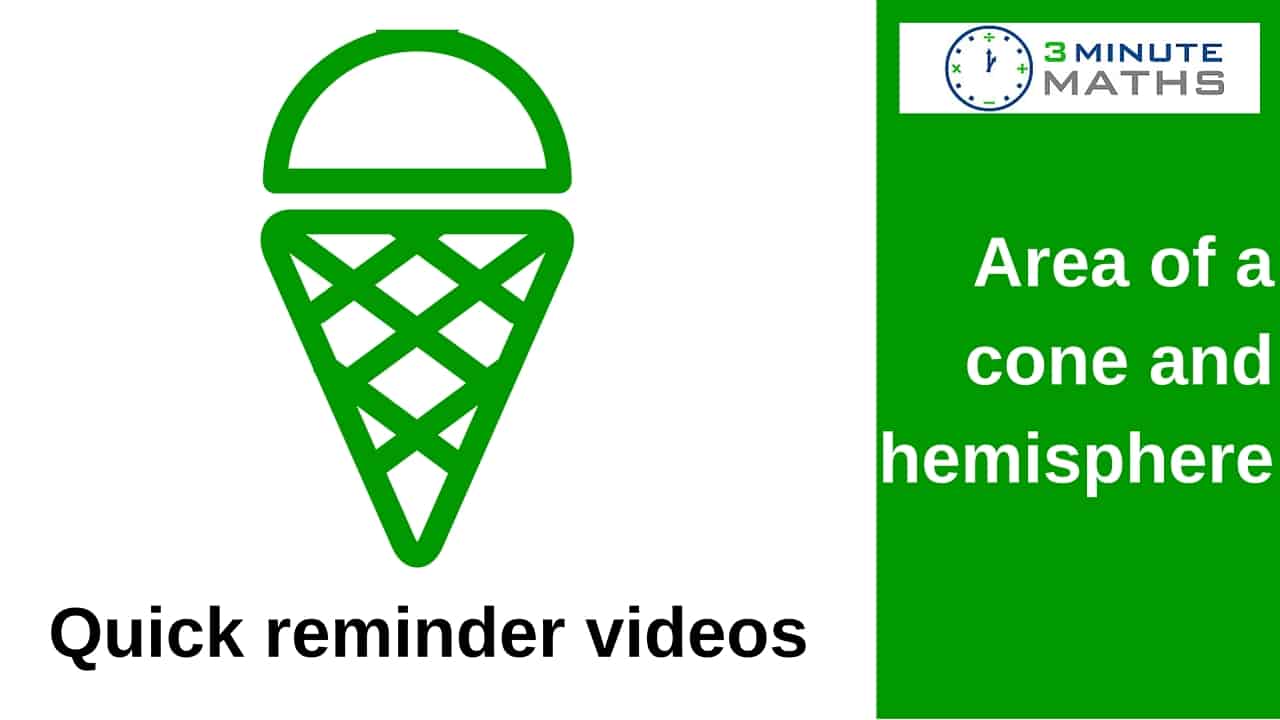Here’s a few videos on how to calculate the surface area of a cone and hemisphere, that I hope might be useful. They are becoming a little more popular on GCSE mathematics as you need to demonstrate a clear, logical method. The questions can be fairly straightforward, although you need to remember a few different formulas:
Surface area of a cone = pi x r x l
Surface area of a sphere is = 4 x pi x r squared
The main things to remember when you are asked how to calculate the surface area of a cone and hemisphere are:
– “l” is the “slant height” – you’ll need to use Pythagoras if you’ve been given the overall height
– Work methodically through and don’t be in too much of a hurry to calculate with pi. You’ll end up with quite a lot of numbers and, as pi is a constant, it won’t be required
– Be careful to check for significant figures or decimal places – there’s one mark available with most exam papers.
If you’d like to ask for any more detail, or you’re not sure about anything, please do ask a question in the comments section.
All best with your studies
Watch on YouTube
How to work out the surface area of a sphere – level 6 GCSE
How to work out the surface area of a cone and hemisphere – level 6 GCSE
How to work out the radius and base area of a cone – level 6 GCSE
How to work out the curved surface area of a cone – level 6 GCSE

Leave a Reply